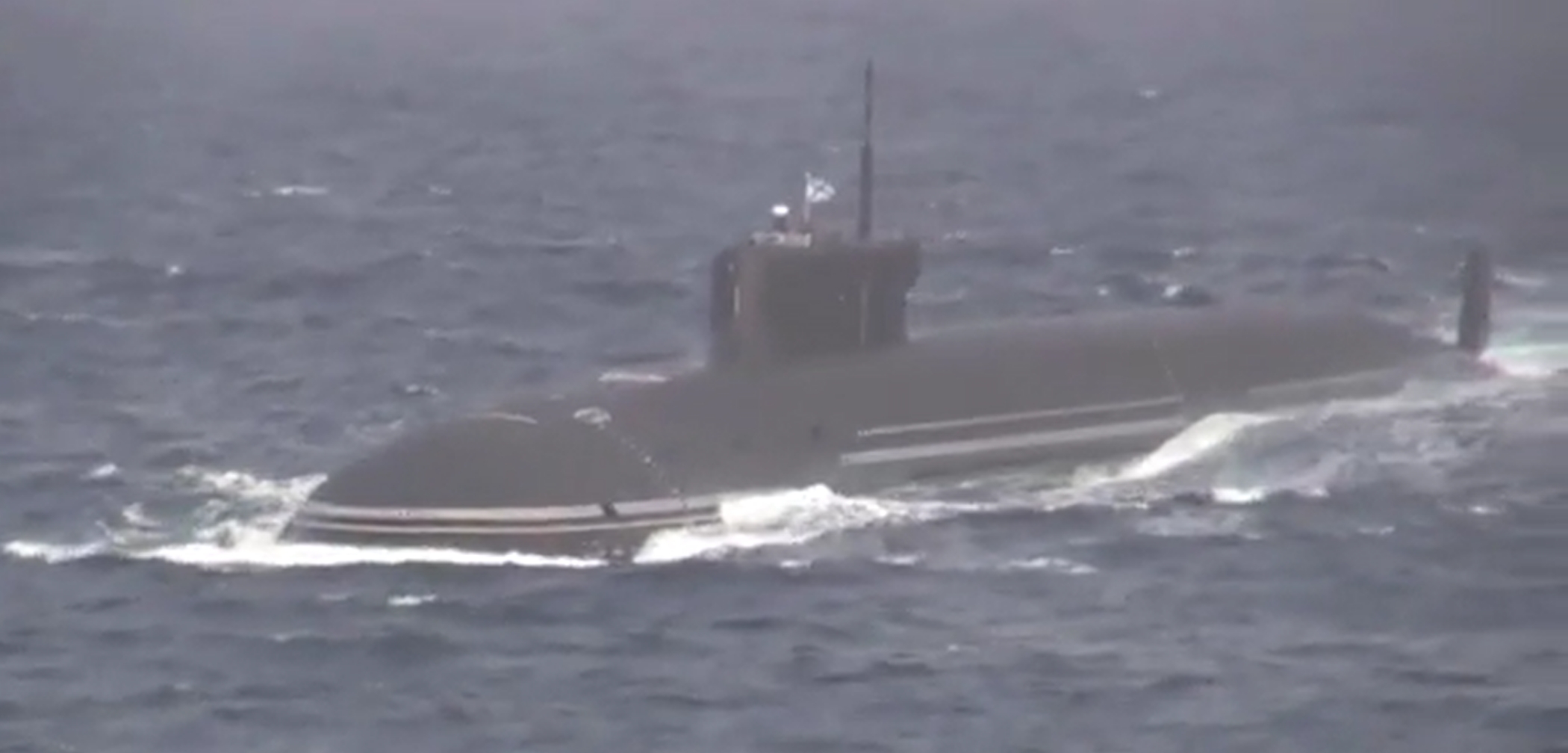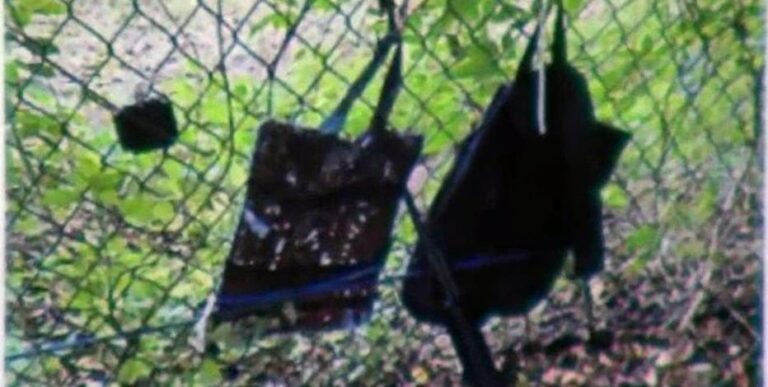Russian Nuclear Submarines Cross Under Arctic Ice Near US Coast
Two Russian navy submarines, one armed with nuclear missiles, completed a voyage under the ice of the Arctic for a transfer from the Barents Sea to the Pacific Ocean.
The Russian Defense Ministry on Monday announced the transfer of two nuclear-powered submarines as part of Ocean-2024, a week-long strategic exercise that took place in the Pacific Ocean and Arctic Ocean. The large-scale military drill concluded the same day.
The transfer also came as Moscow and Washington heated up their rivalry in the Northern Hemisphere this month. They have deployed nuclear-capable bombers to Northern Europe and Northeastern Asia and conducted power projections around the freezing Arctic region.
Russian defense ministry
The voyage was more than 4,000 nautical miles, where submarines Imperator Aleksandr III and Krasnoyarsk arrived at their new home on the Kamchatka Peninsula in the Far East from the Barents Sea in the northwest, shifting from the Northern Fleet to the Pacific Fleet.
During the transfer, both submarines used a route that passed through the waters of six Arctic seas in difficult ice conditions, the Russian Defense Ministry said.
The Borei-class SSBN Imperator Aleksandr III and Yasen-M class SSGN Krasnoyarsk has made their under ice transit to the Pacific Fleet, arriving during Okean
Seen here, possibly in the Bering Sea, along with the PACFLT corvette GreGremyashchiy, with rescue tug SB-408 also present pic.twitter.com/rzsM1U9kmj
— Thord Are Iversen (@The_Lookout_N) September 16, 2024
The unnamed Arctic seas are believed to have included, from west to east, the Barents Sea, Kara Sea, Laptev Sea, East Siberian Sea and Chukchi Sea. They are all the marginal seas of the Arctic Ocean, situated along the lengthy northern coast of Russia.
The Chukchi Sea is the one that bounds the United States. It is in the north of the Bering Strait, a waterway separating Russia’s Chukchi Peninsula to the west and Alaska to the east, connecting the Pacific Ocean to the south and the Arctic Ocean to the north.
The ministry did not specify the voyage’s points of departure and arrival. The Northern Fleet has a ballistic missile submarine base in Gadzhiyevo, and Zapadnaya Litsa base for cruise missile submarines like the Krasnoyarsk. Both are within the northwestern region of Murmansk.
The Rybachiy submarine base near Petropavlovsk on the Kamchatka Peninsula is the home of all nuclear-powered submarines assigned to the Pacific Fleet. The peninsula lies between the Bering Sea to the east and the Sea of Okhotsk to the west.
The Imperator Aleksandr III is a 24,000-ton Borei-class ballistic missile submarine, armed with up to 16 submarine-launched ballistic missiles, and each missile carries six nuclear warheads at most. This type of weapon is one of the three parts of Russia’s nuclear triad.
This type of submarine has seven in service and comes in two versions. Three are the baseline Borei, while the others, including the Imperator Aleksandr III, are the improved Borei-A, which have better stealth capabilities and more advanced electronic equipment.
The Imperator Aleksandr III, also known as the Emperor Alexander III, is the seventh and newest Borei-class submarine. It was launched in December 2022 and was commissioned to the Russian navy a year later, following sea trials and a test launch of a ballistic missile.
The Borei-class is the first-generation ballistic missile submarine that was built in the post-Soviet era. The Delta-IV, the only other type of ballistic missile submarine that is currently in service, was built in the Soviet days and there are five as part of the Northern Fleet.
Meanwhile, the Krasnoyarsk is a 13,800-ton Yasen-class cruise missile submarine, another new generation of submarine for the Russian navy. It has 32 vertical tubes for launching a variety of long-range anti-ship and land-attack missiles, including hypersonic missiles.
The Yasen-class also comes in two versions: the baseline Yasen has one in service and the shorter Yasen-M with three commissioned. The Yasen is 456 feet in length, and the Yasen-M is 426 feet. The number of torpedo tubes also decreased from 10 to eight.
The Krasnoyarsk, launched in July 2021 and commissioned in December 2023, is one of the two Yasen-class submarines assigned to the Pacific Fleet. There are four submarines of the same class in service, while the two other submarines belong to the Northern Fleet.
The Yasen-class is considered the most advanced, powerful and quiet Russian attack submarine, especially when it comes to stealth that matches the latest Western submarines.
This class of submarine has gotten attention from the United States in recent years. Pentagon officials told CBS News’ 60 Minutes that the Severodvinsk, the only baseline Yasen submarine, slipped into the Atlantic Ocean in 2018 and for weeks evaded detection.
A powerful Russian submarine approaching the American coasts undetected could be a disaster in a crisis between the two sides. This pushed the U.S. Navy to reestablish the Second Fleet in 2018 for operations in the East Coast and the North Atlantic Ocean.
Last year, General Glen VanHerck, head of U.S. Northern Command at the time, warned that Russia could deploy the Yasen-class to the Atlantic Ocean and Pacific Ocean and patrolled off the coasts of the U.S. persistently in the next two years.
Thord Are Iversen, an independent defense analyst and a former Norwegian navy officer, told Newsweek that the transfer of the two Russian submarines was intended from early on and was expected for this fall, following similar transfers in 2022 and 2023.
The Pacific Fleet has now operated five Borei-class submarines, while the Northern Fleet has two of the same type. Most of the Borei-class serve the Pacific Fleet because the older Delta-III ballistic missile submarines needed replacement by the 2010s, Iversen explained.
He pointed out that after the dissolution of the Soviet Union, the Pacific Fleet was given lower priority for a long time.
“That started to change in the early 2010s, when the output of smaller warships and submarines from Russian yards started to increase again,” he said.
The Borei- and the Yasen-classes seemed to eventually be going for about a 50/50 split between the Northern and Pacific Fleets, he said: “This means that the relative importance of the Pacific Fleet, especially when it comes to strategic nuclear forces, increases.”
In comparison, the U.S. Navy has 14 Ohio-class ballistic missile submarines, of which eight are based in the Pacific Ocean. This type of submarine carries up to 20 submarine-launched ballistic missiles, and each missile has eight nuclear warheads at most.






